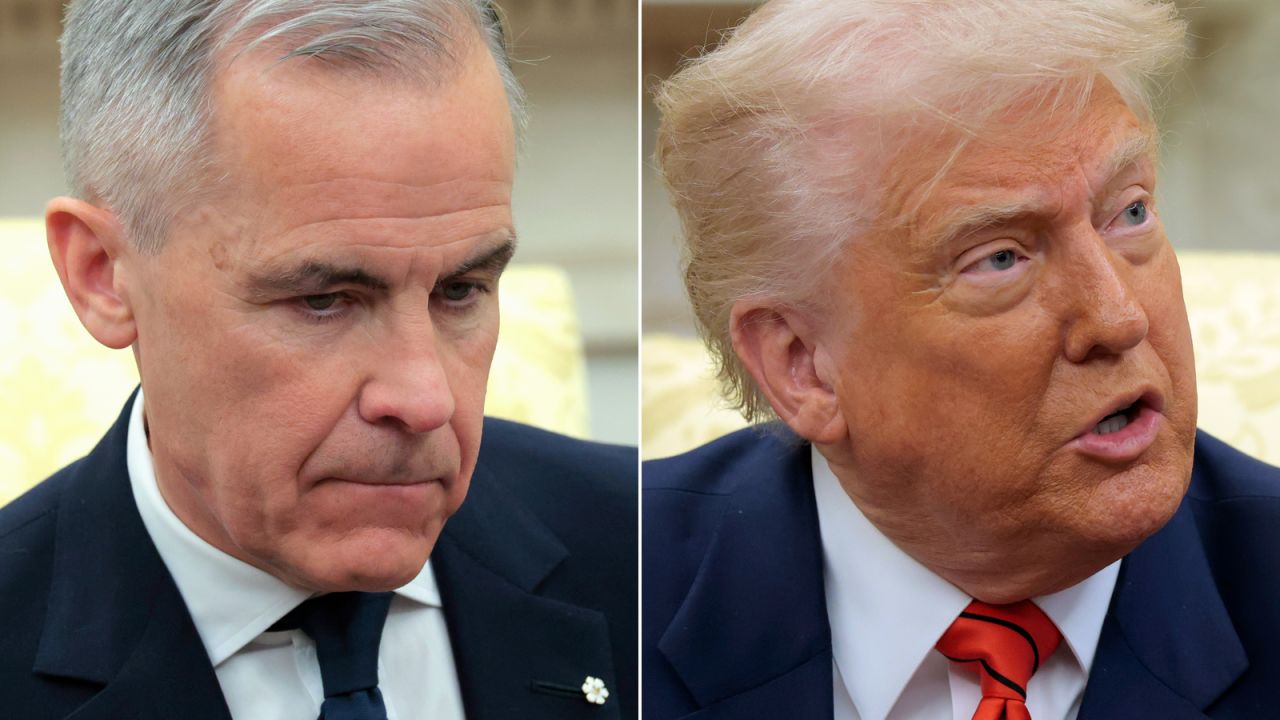Trump’s Tariff Escalation Triggers Diplomatic Tension as Canadian Leadership Responds with Strategic Countermeasures
The ongoing trade relationship between the United States and Canada has reached a new inflection point following President Donald Trump’s implementation of enhanced tariff measures that have significantly impacted cross-border commerce. The latest developments represent a substantial shift in North American trade dynamics, with implications extending far beyond bilateral relations to affect global supply chains and international economic partnerships.
Strategic Implementation of Enhanced Tariff Structure
President Trump’s administration has executed a comprehensive tariff strategy that builds upon his longstanding advocacy for protectionist trade policies. The implementation follows a structured timeline that began with his April 2 announcement of a baseline 10 percent tariff framework affecting nearly all imported goods entering the United States market. This foundational policy established the groundwork for subsequent negotiations and bilateral discussions with key trading partners.
The initial 90-day negotiation window provided both nations with opportunities to engage in diplomatic dialogue and explore mutually beneficial arrangements. However, the extension of this deadline until August 1 demonstrated the complexity of reaching comprehensive agreements that satisfy both American economic interests and international trade partnership obligations.
For Canadian imports specifically, the tariff structure has experienced a notable escalation, with rates increasing from 25 percent to 35 percent as of 4:00 AM on the implementation date. This represents a 40 percent increase in tariff burden for affected Canadian goods, creating substantial cost implications for businesses operating within the integrated North American supply chain network.
Trade Treaty Protections and Exemption Framework
Despite the significant tariff increases, the existing trade treaty infrastructure between the United States and Canada provides protective mechanisms for the majority of Canadian exports. These established agreements reflect decades of economic integration and mutual trade development that have created interdependent commercial relationships across numerous industry sectors.
The exemption framework demonstrates the complex nature of modern international trade relationships, where broad policy initiatives must navigate existing legal commitments and established commercial partnerships. This selective application of tariff measures illustrates the ongoing challenge of implementing comprehensive trade policy while maintaining essential economic relationships with neighboring nations.
Canadian Government Response and Strategic Positioning
Prime Minister Mark Carney’s official response to the tariff implementation reflects a measured yet firm approach to protecting Canadian economic interests while maintaining diplomatic relationships. His statement expressing disappointment with the American administration’s decision establishes a clear position regarding Canada’s perspective on unilateral trade policy changes.
The Canadian government’s strategic response emphasizes domestic economic strengthening through increased investment in national industries and export market diversification. This approach represents a proactive strategy designed to reduce dependency on any single trading partner while building resilience within the Canadian economy.
Carney’s commitment to making “Canada Strong” through strategic investment indicates a long-term approach to economic development that prioritizes domestic capacity building and resource utilization. This positioning suggests that Canadian policy makers view the current trade tensions as an opportunity to reassess and strengthen national economic foundations.
Border Security and Fentanyl Crisis Justification
The Trump administration’s justification for the enhanced tariff rate centers on concerns regarding cross-border fentanyl trafficking, despite statistical evidence suggesting minimal Canadian contribution to this crisis. Official data indicates that Canada accounts for approximately one percent of fentanyl imports into the United States, raising questions about the proportionality of the tariff response to the identified security concern.
Canadian officials have emphasized their nation’s substantial commitments to addressing drug trafficking and border security challenges. The government’s response highlights significant investments in law enforcement capabilities, including the deployment of thousands of additional border security officers and enhanced surveillance technologies.
The comprehensive border security initiative encompasses aerial surveillance systems, advanced intelligence operations, and strengthened legislative frameworks designed to combat transnational criminal organizations. These investments represent Canada’s commitment to collaborative approaches to shared security challenges while maintaining efficient legitimate trade flows.
Differential Treatment of Trading Partners
The selective application of tariff measures reveals the Trump administration’s strategic approach to international trade negotiations. Mexico’s receipt of an additional 90-day negotiation period, avoiding the threatened increase to 35 percent, demonstrates the administration’s willingness to provide flexibility for nations engaged in active diplomatic discussions.
This differential treatment of trading partners reflects the complex geopolitical considerations that influence contemporary trade policy development. The approach suggests that sustained diplomatic engagement and bilateral cooperation can influence the implementation timeline and severity of proposed trade measures.
US-China Trade Relations and Global Implications
The ongoing negotiations between the United States and China provide additional context for understanding the broader implications of current trade policy developments. The temporary escalation of tariffs on Chinese goods to levels exceeding 100 percent, followed by subsequent de-escalation, demonstrates the volatile nature of contemporary international trade relationships.
These fluctuations in US-China trade policy create uncertainty within global supply chains and affect third-party nations like Canada that maintain significant trade relationships with both economic powers. The interconnected nature of modern commerce means that bilateral trade disputes can have far-reaching consequences for international economic stability.
Economic Implications and Future Outlook
The implementation of enhanced tariff measures creates immediate cost pressures for businesses operating within integrated North American supply chains. Companies must evaluate their sourcing strategies and potentially restructure operations to accommodate increased trade barriers and associated costs.
The long-term implications of these trade policy changes extend beyond immediate commercial impacts to influence investment decisions, supply chain development, and strategic planning across multiple industry sectors. Businesses must now consider trade policy volatility as a significant factor in operational planning and risk management strategies.

Emily Johnson is a critically acclaimed essayist and novelist known for her thought-provoking works centered on feminism, women’s rights, and modern relationships. Born and raised in Portland, Oregon, Emily grew up with a deep love of books, often spending her afternoons at her local library. She went on to study literature and gender studies at UCLA, where she became deeply involved in activism and began publishing essays in campus journals. Her debut essay collection, Voices Unbound, struck a chord with readers nationwide for its fearless exploration of gender dynamics, identity, and the challenges faced by women in contemporary society. Emily later transitioned into fiction, writing novels that balance compelling storytelling with social commentary. Her protagonists are often strong, multidimensional women navigating love, ambition, and the struggles of everyday life, making her a favorite among readers who crave authentic, relatable narratives. Critics praise her ability to merge personal intimacy with universal themes. Off the page, Emily is an advocate for women in publishing, leading workshops that encourage young female writers to embrace their voices. She lives in Seattle with her partner and two rescue cats, where she continues to write, teach, and inspire a new generation of storytellers.









